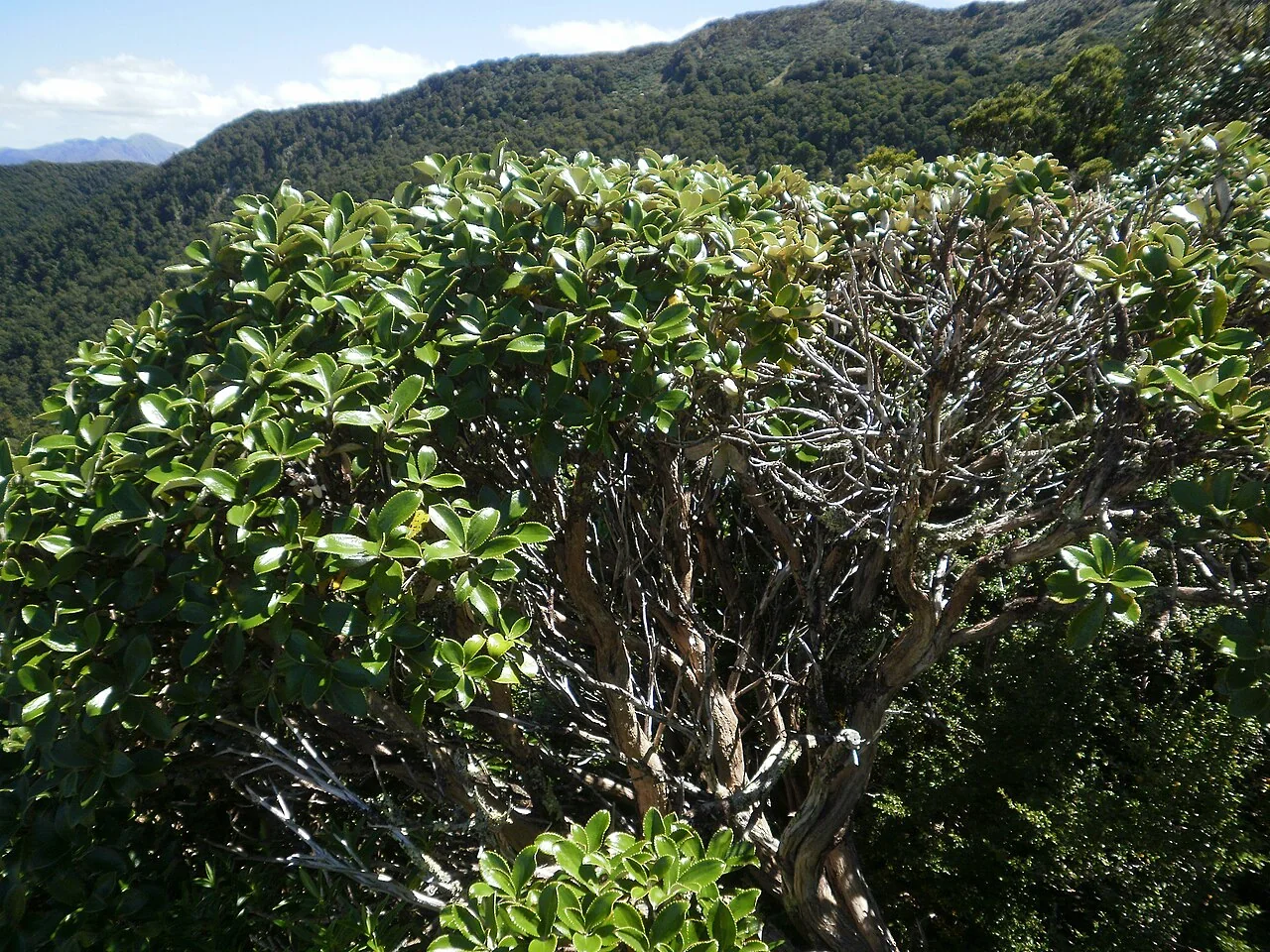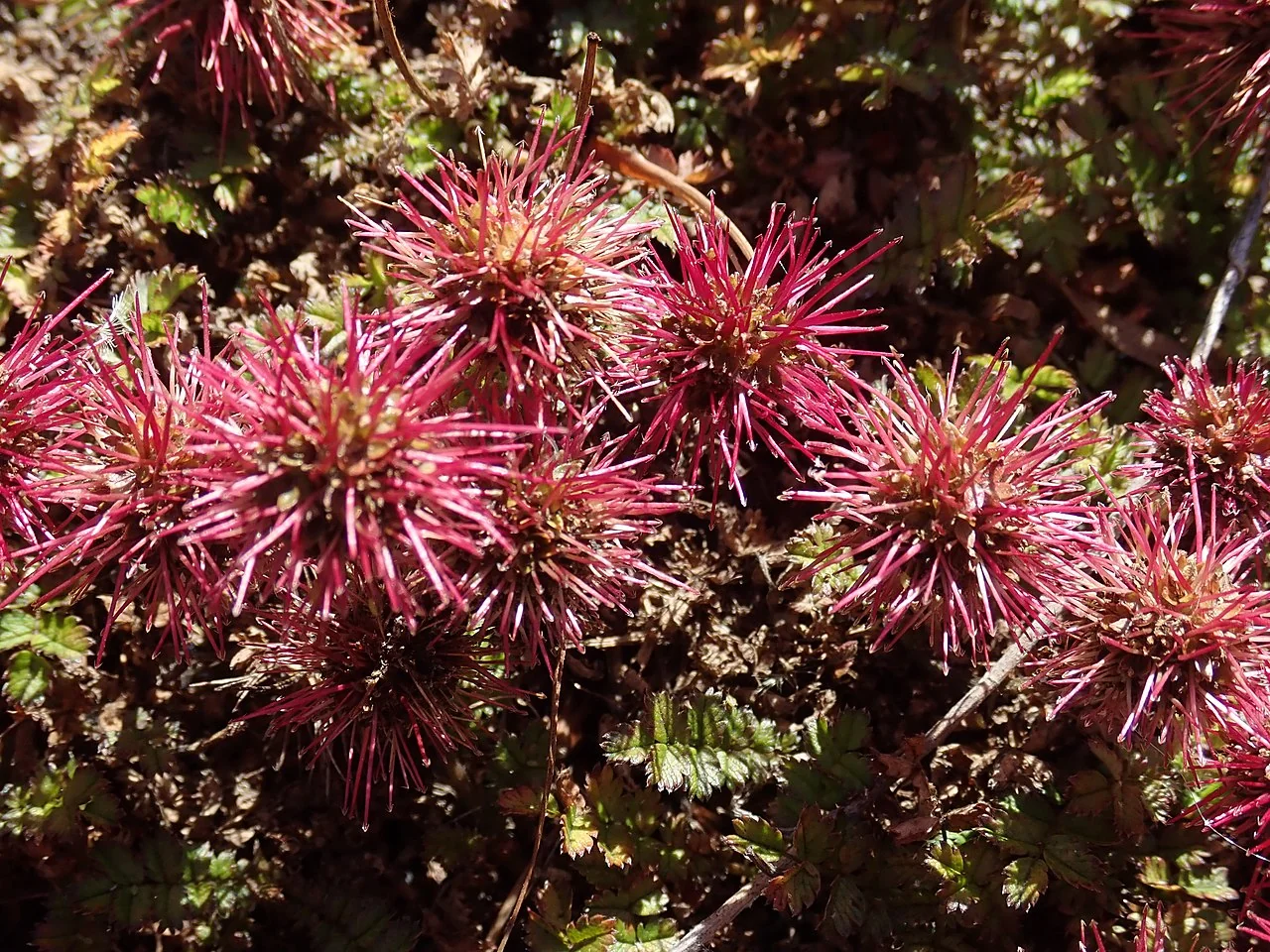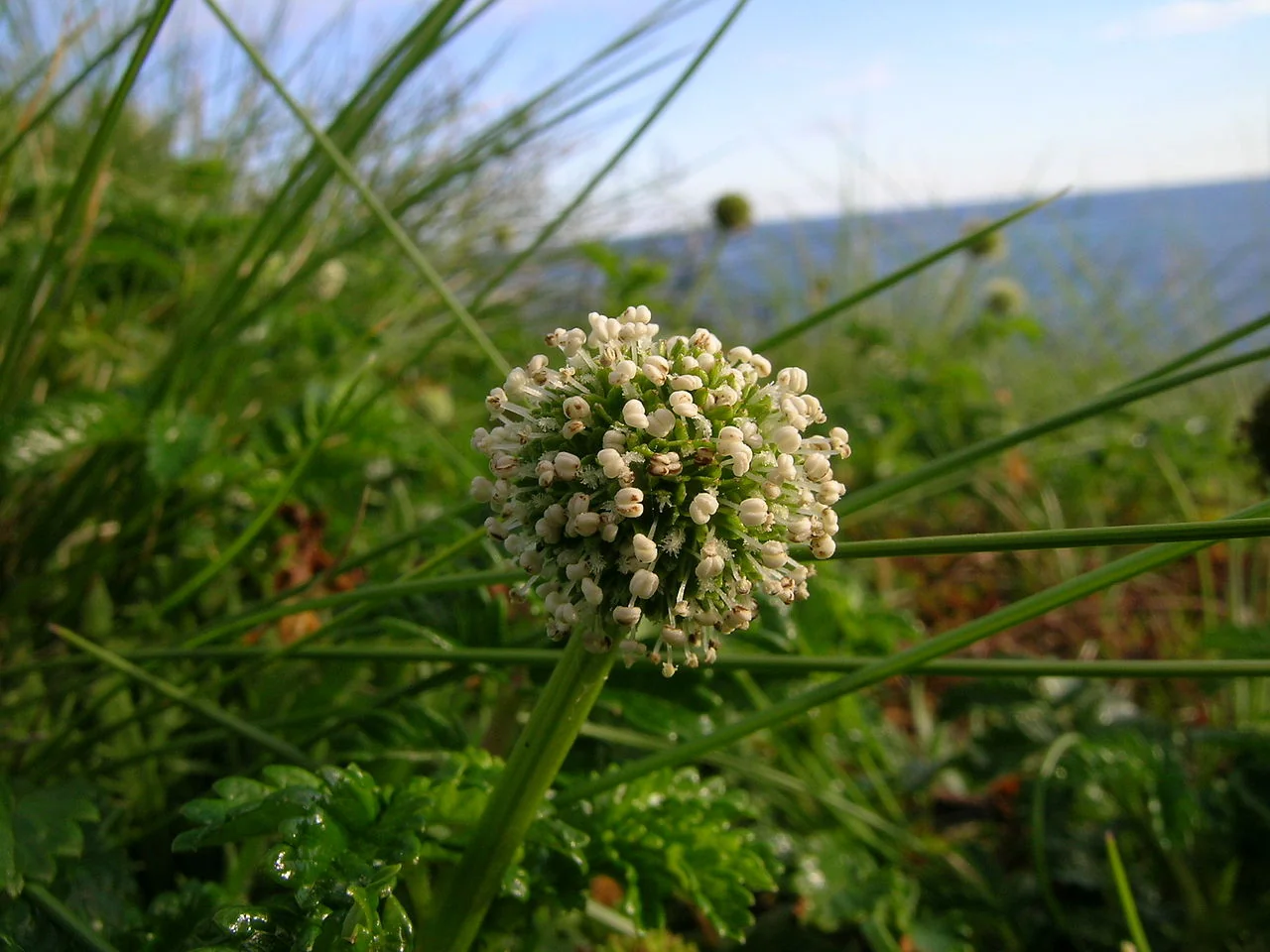
Leatherwood
Macrolearia colensoi
Leatherwood, known by its Māori names tāpare, kāmarahou, or Kāmararānui, is a remarkable hardy shrub recently reclassified from Olearia colensoi to Macrolearia colensoi in 2022. This bushy subalpine species forms dense, sometimes impenetrable thickets with distinctive leathery leaves featuring soft, fuzzy white undersurfaces. Named after William Colenso, the pioneering botanist-missionary who first collected it from Mount Hikurangi in 1844, it produces striking spikes of small mauve or yellow flowers. Extremely tolerant of challenging conditions including wind, salt, and shade, it's an excellent choice for difficult sites and restoration projects. It represents our hardy collection of native shrubs .

Plant Description
Botanical Features
Leatherwood ( Macrolearia colensoi ), also known as tāpare, kāmarahou, or Kāmararānui, is a hardy shrub endemic to New Zealand. It typically grows as a bushy, leathery shrub, often forming dense, impenetrable thickets in subalpine areas, but can also be found at sea level in the far south of New Zealand. It can reach heights of up to 5 to 10 meters. Its leaves are thick, leathery, and rounded to obovate-oblong, measuring 8-20 cm long by 3-6 cm wide, with serrated edges. The upper surface is generally smooth when mature, while the underside is covered in dense, soft, fuzzy white or buff hairs. Its bark is light brown and papery, and its branches are covered in woolly hairs. It produces small, typically dark red, violet/purple, mauve, or yellow flowers, arranged in spikes up to 20 cm long, blooming from November to January.
Quick Facts
Quick Facts Overview
| Scientific Name | Macrolearia Colensoi |
|---|---|
| Māori Names | Tāpare, kāmarahou, Kāmararānui |
| Former Name | Olearia colensoi (reclassified 2022) |
| Height | 2-10 meters |
| Spread | 2-4 meters |
| Water Needs | Low to moderate |
| Light | Full sun to full shade |
| Frost Tolerance | Very high (subalpine species) |
| Salt Tolerance | Excellent |
| Growth Rate | Slow to moderate |
| Lifespan | Long-lived perennial |
Climate Best Suited to
Leatherwood thrives in subalpine climates and coastal environments, naturally found from the North Island's eastern and southern ranges through to Stewart Island. This extremely hardy species adapts from sea level in the far south to subalpine zones, tolerating challenging conditions including wind exposure, salt spray, and temperature extremes.
Regional Suitability
| Whangārei | Ideal |
| Auckland | Ideal |
| Hamilton | Suitable |
| Rotorua | Suitable |
| Tauranga | Ideal |
| Gisborne | Ideal |
| New Plymouth | Ideal |
| Whanganui | Ideal |
| Palmerston North | Suitable |
| Napier | Ideal |
| Wellington | Ideal |
| Nelson | Ideal |
| Christchurch | Suitable |
| Dunedin | Suitable |
| Invercargill | Suitable |
| City | Climate Suitability |
|---|
Plant Habitat
Plant Habitat Overview
This section provides important information about plant care and cultivation practices. Understanding these aspects helps ensure successful growth and development in garden conditions.
Plant Conservation
Macrolearia colensoi , also known by its Māori names tūpare, kūmarahou, or kūmararaunui, and commonly called Leatherwood, is currently classified as "Not Threatened" in New Zealand. This conservation status has been consistent across assessments in 2004, 2009, 2012, 2017, and 2023/2024. The species was reclassified from Olearia colensoi to Macrolearia colensoi in 2022. Macrolearia colensoi is a hardy, bushy subalpine shrub endemic to New Zealand, forming dense thickets in subalpine areas or at sea level in the far south. It is known for its distinctive leathery leaves with fuzzy white undersurfaces and its tolerance to challenging conditions such as wind, salt, and shade. While Macrolearia colensoi itself is not threatened, native alpine plants in general face conservation challenges from climate change impacts on mountain environments, recreational trampling, and potential shifts in vegetation zones. These factors could affect the specialized high-altitude habitats where some alpine species, including Macrolearia colensoi , are found.
Growing Requirements
Soil Requirements
Leatherwood is exceptionally adaptable to soil conditions:
- Thrives in free-draining soils of all types
- Excellent performance in poor, rocky, or challenging soils
- Tolerates coastal sandy conditions
- Adapts to various pH levels
- Handles periodically waterlogged conditions
Light Requirements
Extremely adaptable to light conditions:
- Tolerates full shade to full sun
- Excellent for challenging exposed sites
- Performs well under tree canopies
- Handles coastal conditions with salt spray
Water Requirements
Low maintenance water needs:
- Drought tolerant when established
- Regular watering during establishment phase
- Withstands wind and coastal exposure
- Perfect for low-maintenance landscapes
- Adapted to natural rainfall patterns
Planting Guide
When to Plant
Leatherwood can be planted almost year-round due to its hardiness, but spring and autumn provide optimal establishment conditions when natural rainfall is more reliable and temperatures are moderate.
Site Selection
Choose a site with:
- Any light condition from full shade to full sun
- Free-draining soil preferred but highly adaptable
- Space for mature size (up to 10 m height in ideal conditions)
- Tolerance for exposed, windy, or coastal locations
- Consider neighboring plants as it can form dense thickets
- Perfect for challenging sites where other plants fail
Planting Procedure
- Dig a hole twice as wide and the same depth as root ball
- No soil amendment usually needed due to adaptability
- Position plant at same level it was growing
- Backfill with native soil, firming gently
- Water thoroughly after planting
- Apply light mulch if desired
- Provide temporary shelter only in extreme conditions
Initial Care
Water regularly during first growing season until established. Once established , this extremely hardy species requires minimal care and tolerates neglect better than most plants.
Ecological Role
Environmental Impact
This native daisy plays specialized ecological roles in New Zealand's alpine and subalpine ecosystems, where its flowers provide important nectar resources for alpine insects and its growth form contributes to the distinctive character of mountain plant communities. The plant helps stabilize soils in challenging mountain conditions and provides habitat for specialized alpine invertebrates, while its presence contributes to the unique biodiversity that characterizes New Zealand's high-altitude environments. Its specialized adaptations make it important for maintaining alpine ecosystem integrity.
Uses and Significance
Garden Uses
- Dense hedging and windbreaks
- Restoration plantings and erosion control
- Challenging sites and difficult conditions
- Coastal gardens and salt-tolerant landscaping
- Forest understory and riparian plantings
- Wildlife-friendly gardens
- Low-maintenance landscapes
Historical and Cultural Significance
- Named after William Colenso, pioneering botanist-missionary
- Traditional Māori uses as building material
- Most common shrub used for building round whare on Titi Islands
- Recently reclassified into new genus Macrolearia (2022)
- Important example of taxonomic revision in New Zealand flora
Cultural Significance
Macrolearia colensoi , also known as tūpare or leatherwood, holds significant cultural importance, particularly for Māori, and has historical and scientific relevance in New Zealand.
Key Aspects of Its Cultural Significance Include:
- Māori Traditional Knowledge and Uses: Māori recognized Macrolearia colensoi as an indicator of specific high-altitude environmental conditions and seasonal changes within alpine and mountain plant communities. Its resilience in challenging mountain environments was valuable for understanding alpine ecosystems. The plant was also traditionally used as a building material, notably for constructing round whare (houses) on the Titi Islands.
- Nomenclature: The plant is known by its Māori names tūpare, kūmarahou, and kūmararaunui, alongside the common name leatherwood.
- Historical and Scientific Legacy: The species is named after William Colenso, a notable botanist-missionary who first collected a specimen from Mount Hikurangi in 1844. More recently, its reclassification into the new genus Macrolearia in 2022 highlights its ongoing scientific importance in the study of New Zealand's flora.
- Ecological and Conservation Value: Macrolearia colensoi is valued as a distinctive part of New Zealand's alpine flora, showcasing unique adaptations to high-altitude environments. Its hardiness makes it suitable for restoration projects, where it aids in erosion control and habitat creation by forming dense thickets.
Landscaping Section
Landscaping Section Overview
This section provides important information about plant care and cultivation practices. Understanding these aspects helps ensure successful growth and development in garden conditions.
Seasonal Care Calendar
Spring
- New growth begins slowly in warming temperatures
- Good time for planting new specimens
- Light pruning can be done if required
- Begin regular care for young plants
- Good period for propagation activities
Summer
- Flowering period extends through early summer
- Spikes of mauve or yellow flowers appear
- Monitor establishment plantings during dry periods
- Distinctive fuzzy leaf undersides most visible
- Dense growth provides excellent wildlife habitat
Autumn
- Flowering period concludes with seed development
- Good time for collecting seeds for propagation
- Excellent time for new plantings
- Take cuttings for propagation (though challenging)
- Leathery leaves remain distinctive year-round
Winter
- Evergreen foliage provides year-round structure
- Extremely frost hardy requiring no protection
- Dense branching habit prominent in leafless landscape
- Good time for major pruning if needed
- Plan for spring restoration projects
When to Prune and How Much
When to Prune and How Much Overview
Leatherwood can be pruned heavily if needed for specific purposes:
- Remove dead , damaged or diseased branches any time
- Can be clipped for hedging purposes
- Tolerates hard pruning for restoration work
- Dense natural growth habit may need thinning
- Best pruning time is late winter to early spring
This species naturally forms dense, impenetrable thickets which may require management in garden settings. It responds well to pruning and can be maintained at desired size.
How to Grow Leatherwood
Leatherwood, also known as Tāpare or Kāmarahou, is a remarkably hardy subalpine shrub that forms dense, sometimes impenetrable thickets. Its distinctive leathery leaves with fuzzy white undersurfaces and spikes of small mauve or yellow flowers make it a unique addition to native gardens, especially in challenging sites. Extremely tolerant of wind, salt, and shade, it is an excellent choice for difficult sites and restoration projects. Understanding its propagation methods is key to successfully growing this resilient species.
From Seed
Seed propagation is the most reliable method for growing Leatherwood, though success requires patience and specific techniques. Collect ripe seeds from mature plants during late summer to early autumn (February-March) when fruits are fully developed. Extract seeds from the fleshy fruit immediately and clean thoroughly to remove all pulp and chaff. Sow fresh seeds immediately as they have short-term viability and lose germination potential rapidly. Apply 4 weeks of cold stratification at 4°C to improve germination rates and speed up the process. Sow seeds in a well-draining seed-raising mix with good aeration, covering lightly to a depth of 2-3mm. Maintain consistent moisture without waterlogging, using bottom watering to prevent fungal issues. Provide bright indirect light and temperatures between 15-20°C for optimal germination conditions. Be patient as germination is notoriously slow, typically taking 9-12 months with often low success rates. Once germinated, allow seedlings to develop strong root systems before transplanting to individual containers.
From Cuttings
Semi-hardwood cuttings offer an alternative propagation method, though this approach requires specialized techniques and careful attention to environmental conditions. Success rates can be variable, making this method suitable for experienced propagators. Take semi-hardwood cuttings in late summer to early autumn from healthy, disease-free parent plants. Select 10-15cm long cuttings from current season's growth that have begun to firm up but aren't fully woody. Make clean cuts just below a node and remove lower leaves, leaving 4-6 leaves at the tip. Dip cutting bases in rooting hormone containing IBA at 3000-8000ppm concentration for woody species. Plant cuttings in a very free-draining propagation mix such as 50% perlite and 50% peat moss. Maintain high humidity (80-90%) using a misting system or humidity dome while ensuring good air circulation. Provide bottom heat at 18-22°C and bright indirect light to encourage root development. Monitor for fungal issues and adjust humidity if leaf drop or blackening occurs. Be patient as rooting can take 3-6 months and success rates are often inconsistent. Once rooted, gradually acclimatize plants to normal growing conditions over several weeks.
Pests and Diseases
Scale Insects
- Symptoms: Small, waxy bumps on stems and leaves; yellowing foliage; reduced vigor
- Management: Spray with horticultural oil; encourage beneficial insects; rarely serious on this hardy species
Aphids
- Symptoms: Clusters of small insects on new growth; sticky honeydew production
- Management: Usually controlled naturally by predators; spray with water if severe
Fungal Issues
- Cause: Poor air circulation in very humid conditions
- Symptoms: Leaf spots or powdery coatings on foliage
- Management: Improve air circulation; thin dense growth if needed
Root Problems
- Cause: Consistently waterlogged conditions despite general tolerance
- Symptoms: Wilting and yellowing despite adequate soil moisture
- Management: Improve drainage ; this species prefers free-draining conditions
Cultivation Difficulties
- Establishment Issues: Noted as "very difficult to maintain in cultivation"
- Transplant Sensitivity: May struggle with garden conditions despite natural hardiness
- Management: Minimize disturbance ; plant in conditions as close to natural habitat as possible
Despite its natural hardiness, Leatherwood can be challenging to establish in cultivation. Success may require patience and replicating its preferred natural conditions as closely as possible.
Bonus Tip
Expert Growing Advice
The tough, leathery leaves of Macrolearia colensoi are so distinctive that they give the plant its common name, "Leatherwood". The soft, white, fuzzy undersides of the leaves are also a key identification feature.







